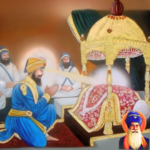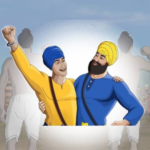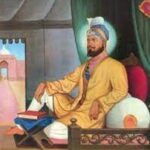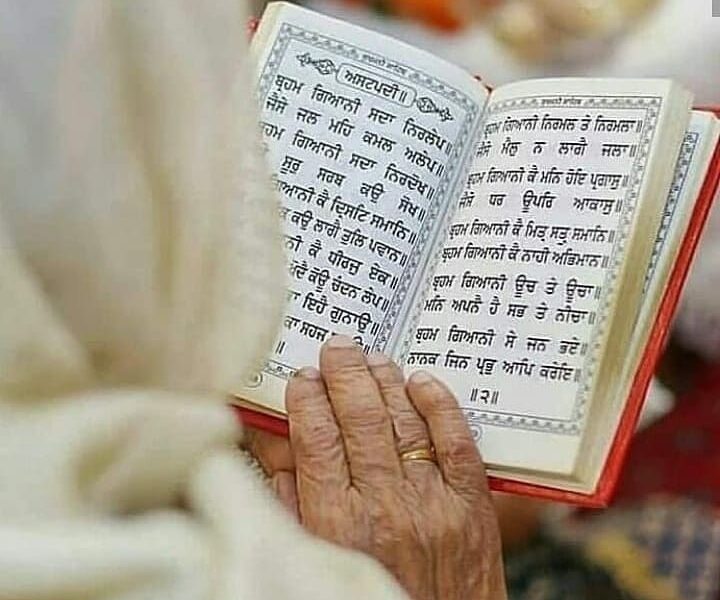The martyrdom of the four “Sahibzaade” (Sons) is a vital and integral aspect of Sikh history, and the occasion of their martyrdom is recalled and honored by the Sikh community every year in December, commonly known as the “Poh” month.
Chaar Sahibzaade (‘Chaar’ means four, and ‘Sahibzaade’ refers to the sons or scions, young men of genteel origin) is an endearing epithet for Guru Gobind Singh Ji, the Sikhs’ tenth guru.
The events that occurred on the 21st and 27th of December 1704 AD are days that Sikhs all over the world remember fondly.
Char Sahibzade is a phrase endearingly used for Guru Gobind Singh’s (Nanak X) four sons, all of whom died as martyrs while still very young. “Char” means four and “sahibzade” refers to the sons or scions, young men of genteel birth. Their names are solemnly kept in Sikh memory and are remembered every time a Sikh ardas or prayer of supplication is said in a congregation or privately by a person.
The following are a series of events concerning Saka Sirhind:
- Eviction of Mata Gujri (mother of Guru Gobind Singh), Sahibzada Fateh Singh, and Sahibzada Zorawar Singh, Guru Gobind Singh’s younger sons, from the siege of Anandpur Sahib.
- The arrest of the following three at Morinda, followed by a hearing at Sirhind.
- Sirhind Court heard an innocent appearance.
- Sooba Sirhind Nawab Wajir Khan supported young Sahibzadas Against Injustice by Nawab Sher Muhammad Khan.
- Declaration of Sahibzadas’ Innocence by Qazis and other officials.
- Diwan Sucha Nand makes provocative arguments in support of the prosecution.
- Found guilty of maintaining an ideology hostile to the Mughal government and religions.
- Punishment – All three were imprisoned on an open tower (Thanda Burj), and both sahibjadas were bricked alive and had their throats slit after the bricked wall fell to the ground, putting both children comatose. Mata Gujjar Kaur died on the same day as both sahibjada martyrs.
- Aftermath
The martyrdom of the four sahibzade is a significant aspect of Sikh history, and the occasion of their martyrdom is recalled and honored by huge numbers of Sikhs every year in December by the Sikh Sangat, with tremendous zeal and deep sadness (holy congregation).
The 21st and 26th of December are days that hold very dear memories for Sikhs around the world, for it was on these days in 1705 that the older sahibzade Baba Ajit Singh and Baba Jujhar Singh first set off for their heavenly abode on the 21st and then on the 26th, as the delicate and tender light of the younger Sahibzade, Baba Zorawar Singh and Baba Fateh Singh was cruelly and inhumanely extinguished by the Mughal ruler of Sirhind.
What occurred there? In 1704 hill rajas and Mughal armies seized Anandgarh Fort, Anandpur Sahib, for around 8 months. When the Mughals and Hilly Rajas desired Guru Gobind Singh to leave the fort, they pledged on the Quran and the Bhagwat Gita/Gauo Mata that he would be safe. On the request of the panj piaras, the Guru chose to depart the fort. On the freezing night of December 20, 1704, Guru Sahib, four Sahibzadas, Mata Gujar Kaur, Guru’s Mahil (Court and Palace officials including Mata Jeeto Ji, his sole wife), five Panj Piaras, and a few hundred Sikhs departed Anandpur Sahib for Ropar. During the night of December 20-21, the enemy violated the vows and assaulted Guru’s entourage at a location on the Sarsa rivulet some 25 km from Anandpur Sahib. Guru’s family had split up. Pariwar Vichhora is the new name for this location.
Mata Gujar Kaur Ji accompanied Guru family cook Gangoo, a Kashmiri pandit, to his village, Saheri near Morinda, with two younger grandchildren. Guru’s Mahil set out for Delhi with Bhai Mani Singh. Guru Gobind Singh led two senior Sahibzadas, five Panj Piaras, and forty Sikhs to Chamkaur, where they arrived on the afternoon of December 21. Both are in the Ropar District (Pb.). On the 22nd and 23rd of December 1704, two senior Sahibzadas, three Panj Piaras, and forty Sikhs died facing a ten lakh-strong Mughal army. Mata Gujar Kaur ji and the two younger Sahibzadas were betrayed for some gold mohurs by gangoo brahman (Kashmiri pandit) and jailed by Morinda Mughals sent by Wazir Khan at Saheri Village. They were then handed over to Suba Sirhind. They were held in the Thanda Burj (Cold Tower). A farcical trial began in Suba Sirhind’s Kacheri (Court). It was three days long. A horrific and cold-blooded atrocity was performed in the Sarzameen of Sirhind on December 26, 1704. Baba Zorawar Singh and Baba Fateh Singh, Guru Gobind Singh’s two younger sons, were bricked alive and afterward executed in front of the Assembly of Shaitans, presided over by Suba Sirhind, that murderous Wazir Khan. As their funeral rites could not be performed. As their final rites could not be performed on Mughal ground (land), two younger Sahibzadas and Mata Gujar Kaur (mother of Guru Gobind Singh Ji) were cremated by a merchant Diwan Todar Mal, who covered the cremation grounds in gold coins; this location is now known as Jyoti Swaroop Gurudwara Sahib in Fatehgarh Sahib, Punjab, India.
Samat Bikrmi dates and years include the departure of Anandpur Sahib on 5 Poh 1761, the Battle of Chamkaur on 6, 7, and 8 Poh 1761, and the Saka Sirhind on 11, 12, and 13 Poh 1761.








